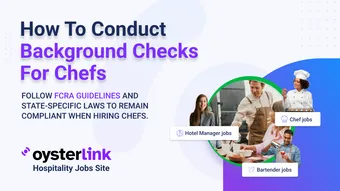The picky diner who sends back a perfectly cooked steak. An intoxicated patron refusing to leave the bar at closing time. The hotel guest demanding a free upgrade. Sound familiar? These situations can feel overwhelming, but with the right approach, they can be opportunities for providing exceptional service.
That’s why we’ve put together a guide on how to handle difficult customers in restaurants, hotels and other hospitality settings.
Read on for practical tips and strategies that’ll help you turn tricky situations into opportunities to showcase your professional skills — and foster customer loyalty, too.
Common Types of Difficult Customers
Handling difficult customers effectively begins with understanding the different types you may encounter. By identifying their traits and behaviors, you can tailor your approach to defuse tension and provide excellent service.
Here are some of the most common types of difficult customers in hospitality:
The Difficult-To-Please Perfectionist
They demand flawless service and typically have extremely high expectations for every detail, be it food presentation or room cleanliness. Their standards tend to be unrealistic, leading to frequent complaints or dissatisfaction.
How to deal with them: Show empathy, listen actively to their concerns and assure them of the establishment’s commitment to quality. Follow up to ensure their needs are met.

The Constant Requester
This type of difficult customer expects constant attention and personalized service from staff — often at the expense of other guests. As such, their requests and demands can monopolize staff time and resources and possibly disrupt service flow.
How to deal with them: Anticipate their needs and address these in advance to reduce repeated interruptions. Otherwise, manage their expectations by clearly outlining what is feasible while maintaining a professional, accommodating tone.
The Impatient Guest
This guest has a low tolerance for delays or slow service, expecting promptness even during peak hours. They often visibly express their dissatisfaction — whether vocally or through negative body language — which may increase stress for staff.
How to deal with them: Keep them informed about wait times or delays to manage expectations and reduce perceived uncertainty. Expedite their requests wherever possible by involving multiple team members.
The Bargain Hunter
Customers who fall under this type are always on the lookout for discounts, special deals or free perks. They are quick to question prices, compare your establishment’s offerings with competitors’ and may attempt to negotiate for lower rates, upgrades or additional benefits that aren’t reasonable.
How to deal with them: Stay polite but firm when denying their requests, and explain the value of what they are receiving. Offer alternatives (such as loyalty programs) to add perceived value without conceding to demands.

The Disruptive Customer
Their behavior may include being excessively loud, engaging in arguments, ignoring rules or otherwise drawing negative attention. These customers can create an uncomfortable environment for others and disrupt the smooth flow of operations.
How to deal with them: Calmly address their behavior and enforce house rules if necessary. In extreme cases, involve management or security. Also, apologize discreetly to other customers and assure them that the situation is being handled.
9 Tips for How To Handle Difficult Customers
Although situations may vary, below are some general advice to help you navigate interactions with difficult customers effectively while maintaining a positive atmosphere for both the guest and your team as much as possible.
1. Maintain Proper Body Language
Your non-verbal signals matter a lot in challenging situations with customers. How you present yourself can either calm a tense situation or unintentionally escalate it. Keep your body language open by:
- Keeping your arms uncrossed: Crossed arms can appear defensive or closed off, which may make the guest feel unwelcome or that you are uninterested in resolving the issue
- Making appropriate eye contact: This shows that you are listening and engaged. However, avoid staring too intensely, as it can come across as confrontational.
- Standing at a slight angle rather than directly facing the guest: This is especially applicable in heated situations. Doing so subtly signals that you are approachable and willing to help without appearing overly formal or imposing.
- Maintaining a neutral facial expression: Avoid frowning, raising your eyebrows or smirking, as these can unintentionally communicate frustration, disbelief or disrespect.
- Using controlled, slow hand gestures while speaking: For instance, using open palms while explaining a solution conveys transparency and willingness to help. Avoid abrupt or exaggerated motions.
2. Keep Your Communication Professional
Always maintain a professional tone even in challenging situations, as it sets the standard for any customer interaction. Address guests by their preferred title and name, showing respect through both your words and body language.
In fact, your choice of words can diffuse tension before it escalates. Use phrases that show ownership of the situation, such as: "I will help you resolve this," or "Let me take care of that for you."
3. Talk Softly and Avoid Raising Your Voice
Lower your voice slightly below your normal speaking volume. This often creates a calming effect — especially when dealing with agitated guests — and encourages the other person to match your tone.
Generally, a softer voice helps maintain control of the situation without appearing confrontational. This technique works notably well in restaurant and hotel lobby settings where other guests might be nearby.
4. Listen Actively and Give Customers Time to Talk
Active listening goes beyond merely hearing the words a customer is saying. It involves fully focusing, understanding and giving them time to express themselves without interruption.
To demonstrate active listening, incorporate supportive phrases like:
- "I understand your concern about..."
- "Please tell me more about..."
- "Let me make sure I've got this right..."
- "What would be most helpful for you right now?"
5. Apologize Sincerely
A sincere apology when necessary is one of the most powerful tools in defusing a tense situation. When customers are upset, acknowledging their feelings and offering a heartfelt apology can help rebuild rapport and show that you genuinely care about their experience.
Acknowledge the issue and express empathy; avoid sounding like you’re only apologizing for the sake of getting through the conversation.
6. Understand the Customer's Point of View
This is one of the most important rules to follow when learning how to handle difficult customers. Putting yourself in their shoes can help you better understand their frustration and respond with empathy.
For example, as a restaurant Server, you might encounter a customer who is visibly upset about a long wait for their table. Keep in mind that they might be dealing with hunger, time constraints or the stress of a special occasion.
Alternatively, if you’re working the front desk in a hotel, you might encounter a guest who is upset because their room isn’t ready upon arrival. Recognize that their frustration could stem from travel fatigue or tight schedules.
Understanding situations like these helps you respond with genuine empathy rather than defensive explanations.
7. Provide a Clear Solution or Answer
When dealing with difficult customers, always aim to have a concrete solution or definite answer to their concerns. This shows the guest that you are committed to helping them.
Even if the issue cannot be resolved immediately, explain what you're going to do, how long it will take and what the guest can expect as an outcome.
8. Loop In Management if Necessary
Know when to involve your supervisor (e.g., the Restaurant Manager or the Hotel Manager), especially in cases like:
- The situation exceeds your authority.
- The guest specifically requests or demands to speak to someone in charge.
- You've tried solutions but haven’t been successful.
- The interaction becomes hostile.
Remember — calling for backup isn't giving up. It shows you're taking the guest’s concerns seriously. Also, it ensures proper handling of complex situations.
9. Never Take It Personally
Handling difficult customers in hospitality can be emotionally and mentally tiring, but it's important to remember that their frustration is not a reflection of your abilities.
When a customer expresses anger or dissatisfaction, it’s usually directed at the situation, not at you as an individual. Understanding this distinction will help you stay calm and maintain professionalism, allowing you to handle the situation more effectively.
Key Takeaways on How To Handle Difficult Customers
Mastering how to handle difficult customers is a defining skill that sets exceptional hospitality professionals apart from the rest. Your ability to stay calm and professional in the face of challenges not only influences guest satisfaction but also plays a key role in your career growth.
After all, every challenging interaction presents an opportunity to demonstrate your expertise — whether you’re working as a Server, Bartender, Hotel Receptionist or some other customer-facing role.
By applying the strategies outlined in this guide, you can improve your confidence when it comes to managing tough situations effectively.
Looking to take your hospitality career to the next level? Explore exciting job opportunities on OysterLink.
You can also check out our Spotlight for more career advice to further develop your skills and our Celebrity Interviews for insights from top industry professionals!








Loading comments...